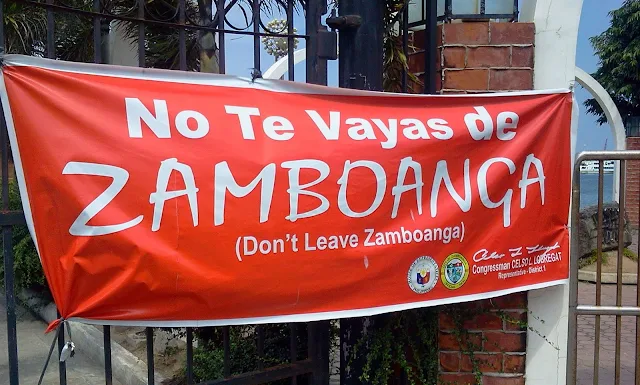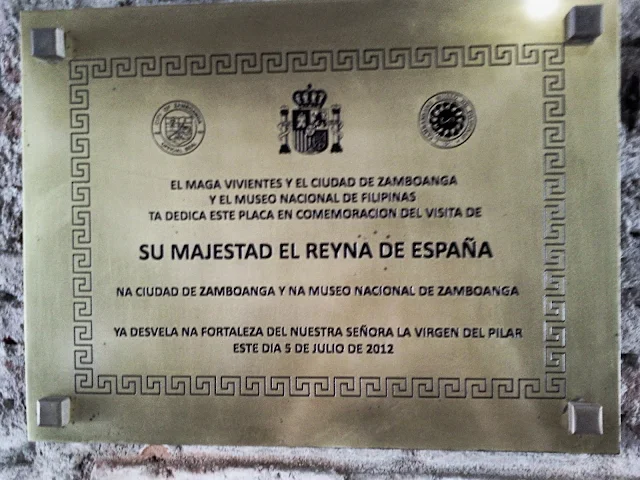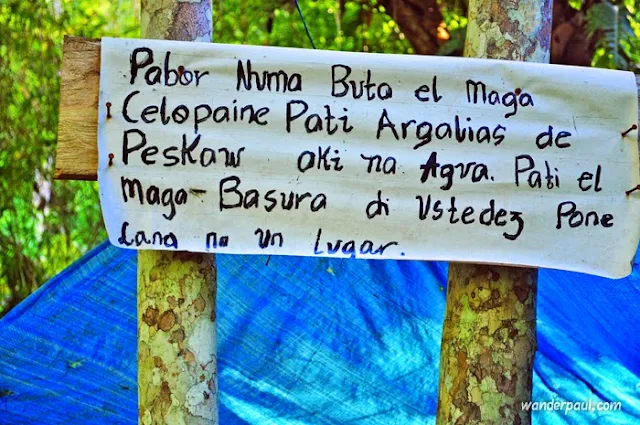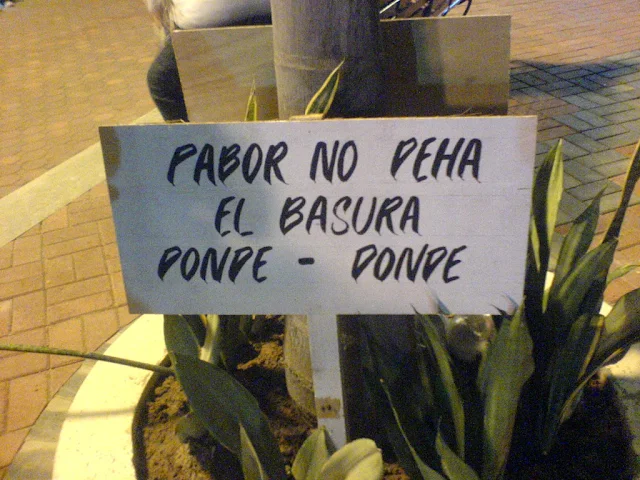While Le Petit Prince (The Little Prince) written by Antoine De Saint-Exupéry in 1943 now has over 300 translations in different languages worldwide and is now considered the world’s most translated book (not counting religious works), there have been surprisingly only two translations of his book in the Philippines (Filipino and Bicol). El Diutay Principe is only the third edition featuring a Philippine language. The Little Prince is a classic French novella about a pilot who gets stranded in the desert after a plane crash and encounters a little fellow who asks him to draw a sheep for him. Through the course of their meeting, the pilot rediscovers the true meaning of life and what people should value the most. When I came across the book in 2013, I found that I could relate very well to the negative image given to “growing up” in the book. When the idea to translate the book into my mother tongue was presented to me, I didn’t think twice. I thought, ‘a lot of people my ...
Chabacano signs are one way of keeping Chabacano alive, so I have decided to make a mini compilation of Chabacano signs found all over Zamboanga city. Enjoy the photos!
1. First, we have a photo of the City Health Office and its slogan. Nuestro deseo un ciudad sin enfermedad (our desire is a city free of illnesses). I really love how the written Chabacano in that slogan can sound contemporary and traditional at the same time. This is actually my favorite Chabacano sign.
3. The next one is a sign found at the National Museum branch in Zamboanga city which I think is photographed very often by tourists coming to Zamboanga city. Pabor deja el sapatos, sandals, y chinelas abajo. It asks visitors to leave their footwear downstairs.
4. Fourth on the list is not actually written in Chabacano, but in Spanish. The streamer says no te vayas de Zamboanga (don't leave Zamboanga) which is a line from the famous folk song No Te Vayas De Zamboanga. I found streamers with this message all over Zamboanga city and it really touched my heart. I think a lot of people have been leaving Zamboanga city because of the crisis in 2013. This is really sad.
A lot of debate has been going on with regards to whether no te vayas de Zamboanga is correct or not. Most people seem to say that it should be no te vayas a Zamboanga. I have verified this with a Spanish speaker from Mexico and he confirmed that no te vayas de Zamboanga is correct. No te vayas a Zamboanga actually means don't go to Zamboanga (although he said that no vayas a Zamboanga sounded better). Anyway, the congressman (who spearheaded this campaign), as far as I know, can speak Spanish, so he would know if it were wrong.
5. Did someone call the policia? Over here is a photo of some police cars guarding Zamboanga city. This is really cool.
6. This is a plaque commemorating the visit of a Spanish queen to the city. Last July 5, 2012, Queen Sofia visited Zamboanga city to inspect some projects funded by the Spanish government.
7. Next on the list is a welcome sign found at the airport of Zamboanga city. The airport has a very interesting design and gives visitors a glimpse to the city's Islamic heritage.
9. This is sign is also found at the airport in Zamboanga and the sign says salida.
10. Next is a photo of a science museum called Zamboanga city Science Park (Parque de Ciencia de Zamboanga). It has several interactive science exhibits similar to the Mind Museum in Taguig.

From: https://www.facebook.com/visitzamboangacity/
18. This is a sign found in Merloquet falls asking people not to bring food and drinks with them. Pabor numa liba kumida pati tomada aki ariba. Merloquet falls is one of the up-and-coming tourist destinations in Zamboanga city.
From: http://www.wazzuppilipinas.com
From: Facebook find, credits to the owner

From: Alshei Tebbz
1. First, we have a photo of the City Health Office and its slogan. Nuestro deseo un ciudad sin enfermedad (our desire is a city free of illnesses). I really love how the written Chabacano in that slogan can sound contemporary and traditional at the same time. This is actually my favorite Chabacano sign.
2. Then we have the city tourism office or the oficina de turismo local. If you're ever planning to visit the pinks sands of Sta Cruz island, this is where you can get help from. It is located adjacent to the Paseo del Mar.
3. The next one is a sign found at the National Museum branch in Zamboanga city which I think is photographed very often by tourists coming to Zamboanga city. Pabor deja el sapatos, sandals, y chinelas abajo. It asks visitors to leave their footwear downstairs.
4. Fourth on the list is not actually written in Chabacano, but in Spanish. The streamer says no te vayas de Zamboanga (don't leave Zamboanga) which is a line from the famous folk song No Te Vayas De Zamboanga. I found streamers with this message all over Zamboanga city and it really touched my heart. I think a lot of people have been leaving Zamboanga city because of the crisis in 2013. This is really sad.
A lot of debate has been going on with regards to whether no te vayas de Zamboanga is correct or not. Most people seem to say that it should be no te vayas a Zamboanga. I have verified this with a Spanish speaker from Mexico and he confirmed that no te vayas de Zamboanga is correct. No te vayas a Zamboanga actually means don't go to Zamboanga (although he said that no vayas a Zamboanga sounded better). Anyway, the congressman (who spearheaded this campaign), as far as I know, can speak Spanish, so he would know if it were wrong.
5. Did someone call the policia? Over here is a photo of some police cars guarding Zamboanga city. This is really cool.
From: www.mindanaoexaminer.net
From: Facebook find, credits to the owner
7. Next on the list is a welcome sign found at the airport of Zamboanga city. The airport has a very interesting design and gives visitors a glimpse to the city's Islamic heritage.
From: https://www.facebook.com/magtv.na.1
8. The next sign is also found at the airport in Zamboanga and it's a sign that says llegada.
Source: buenos-Diaz in Skyscrapercity.com
10. Next is a photo of a science museum called Zamboanga city Science Park (Parque de Ciencia de Zamboanga). It has several interactive science exhibits similar to the Mind Museum in Taguig.
From: https://www.facebook.com/parquedecienciadezamboanga
11. This one is a sign asking people not to throw cellophane (bags) and fish gills in the water. Pabor numa buta el maga celopaine pati argalias de peskaw aki na agua. Pati el maga basura di ustedes pone lang na un lugar (Please don't throw cellophane and fish gills in the water. And put your trash in one place). Fish gills? 😂 The word argalias comes from the Spanish agallas which also means fish gills. Camins' Chabacano dictionary spells it as argallas.
From: http://wanderpaul.com
12. This is a photo of a high school in Talon-Talon, Zamboanga city. It really makes me happy to see the government championing Chabacano.
From: http://www.zamboanga.com
13. This is a bookstore's ad which roughly translates to: "The perfect place for you is appearing soon". The photo was taken before the bookstore opened at the KCC Mall de Zamboanga.

From: https://www.facebook.com/visitzamboangacity/
14. This is a photo of an elementary school in Zambowood, Zamboanga city.
From: http://inpinaysfootsteps.blogspot.com
15. Next, we have a menu from Alavar Seafood Restaurant. Please note that the menu below is not updated and is just for illustration purposes. Alavar's is actually a very popular restaurant in Zamboanga city. And in case you haven't noticed, the menu is written mostly in Chabacano! 😁 I'll have the Choca Kilawin (squid ceviche) and the Caldo de Locon (sour prawn soup), please!
From: www.traveling-up.com
16. The next one is a photo of the city hall in Zamboanga city dressed in Christmas lights during Christmas time. On the balcony, it says Felices Pascuas y Prospero Ano Nuevo (Merry Christmas and Happy New Year).
From: www.panoramio.com
17. Our next sign is one that asks people not to throw trash anywhere. Pabor no deha el basura donde-donde.
From: chuck23 in Skyscrapercity.com
18. This is a sign found in Merloquet falls asking people not to bring food and drinks with them. Pabor numa liba kumida pati tomada aki ariba. Merloquet falls is one of the up-and-coming tourist destinations in Zamboanga city.
From: http://inpinaysfootsteps.blogspot.com
20. This one is a banner that wishes everyone a merry Christmas and a prosperous new year.
From: Acercycle in Skyscrapercity.com
21. This is a welcome sign found at the Sta Cruz Islands. Mas alegre na Zamboanga means it's more fun in Zamboanga and it's Chabacano's version of the Department of Tourism campaign slogan, it's more fun in the Philippines.
From: http://www.wazzuppilipinas.com
22. This is a welcome sign.
23. This is another welcome sign found at the Integrated Bus Terminal of Zamboanga.

From: Alshei Tebbz
24. This is yet another welcome sign found at one of the parks in Zamboanga city.
25. And this... wait for it. Yep, you guessed right. This is another welcome sign! 😜 This welcome sign is found at the Museum of Zamboanga or ElMuseo de Zamboanga.
From: www.wazzuppilipinas.com
I hope you guys enjoyed reading this article and looking at all these photos. Let's all hope that we see more of these Chabacano signs around Zamboanga city because they will definitely help keep our Chabacano alive.
Conversa Chabacano!
Conversa Chabacano!
























Muy bonito, sñr. Jerome. ^_^
ReplyDeleteWow... gracias ya mencioná tu el nombre de AcerCyle. Yo ese si Acer. Jejeje ^_^
Enhorabuena por este bonito blog. Saludos.
ReplyDeleteDesde Espana,el sur,un humilde profesor de espanol,le agradece su lucha y sacrificio por la cultura hispanofilipina y por el castellano en su patria.Adelante tambien con el chabacano!.Un abrazo,Don Guillermo.Joaquin
DeleteYa te echaba de menos Jerome!.Muy,muy interesante...ojala pueda visitar tu ciudad,bien bonita,algun dia.Triste lo que cuentas de la gente que abandona la ciudad,que tal esta la situacion general ahora?.No te puedes quejar,entre los que intervienen en tu blog esta Don Guillermo Gomez Rivera,siempre,siempre,siempre..con el castellano en Filipinas.Lastima que no intervenga mas en los blogs de Chabacano e hispanofilipino,que han aparecido ultimamente,seguro que todos aprenderiamos muchas cosas,un abrazo Don Guillermo.Desde el sur de Espana,un fuerte abrazo Jerome!
ReplyDeleteVery nice one... thanks for including some of my pics from http://inpinaysfootsteps.blogspot.com. I have another blog: http://inpinaysciudad.blogspot.com but I realized I have not included any post related to Chavacano! ...But anyway, you are way so much better than me in this language! (And don't be surprised this is in English because I am really Cebuana!)
ReplyDeleteGracias por incluir todos estos signos de la supervivenciadel español en esa querida tierra filipina. Gracias
ReplyDeleteI miss our hometown Noy :)
ReplyDeleteera puede preserva con el lenguaje Chavacano de Zamboanga y donde pa na entero Filipinas.
ReplyDeleteMas bueno si todo ciudadanos de Zamboaga hay combersa Chavacano. Hace tambien Chavacano con el todo signos na ciudad.
Era dale importancia el gobyerno local de Zamboanga con con el preservacion de Chavacano
No te vayas de Zamboanga means DO NOT GO TO ZAMBOANGA
ReplyDeleteHi. I think "no te vayas DE Zamboanga" is do not go away from Zamboanga. No te vayas A Zamboanga is do not go to Zamboanga. :-)
DeleteSaludos de un joven español, de Córdoba, enamorado de su país, Filipinas. He tenido la suerte de viajar en tres ocasiones allí, y en uno de estos viajes pude visitar Zamboanga city y conocer el chabacano durante dos semanas. Sin duda espero poder regresar pronto a esa maravillosa tierra! En mi blog resumí un poco mi experiencia en Zamboanga y los pueblitos cercanos, por si alguien quiere leer:
ReplyDeletehttps://maniacospro.wordpress.com/2014/10/10/no-te-vayas-de-zamboanga-inolvidable-filipinas/
Por cierto, vi una de mis fotos en esta entrada! La del coche de policía y el "Vaya con Dios!", jaja, me hizo gracia ver una foto mía aquí. Compartí otras bonitas fotos de ese viaje en su día también junto a esas notas.
Gracias por escribir sobre el chabacano. Seguiré la pista a su blog.
Bendiciones!
Gracias por escribir este articulo. Siempre me hace sentir contento cuando leo buenas cosas sobre mi ciudad. Voy a compartir tu articulo con mis amigos. :-)
Delete